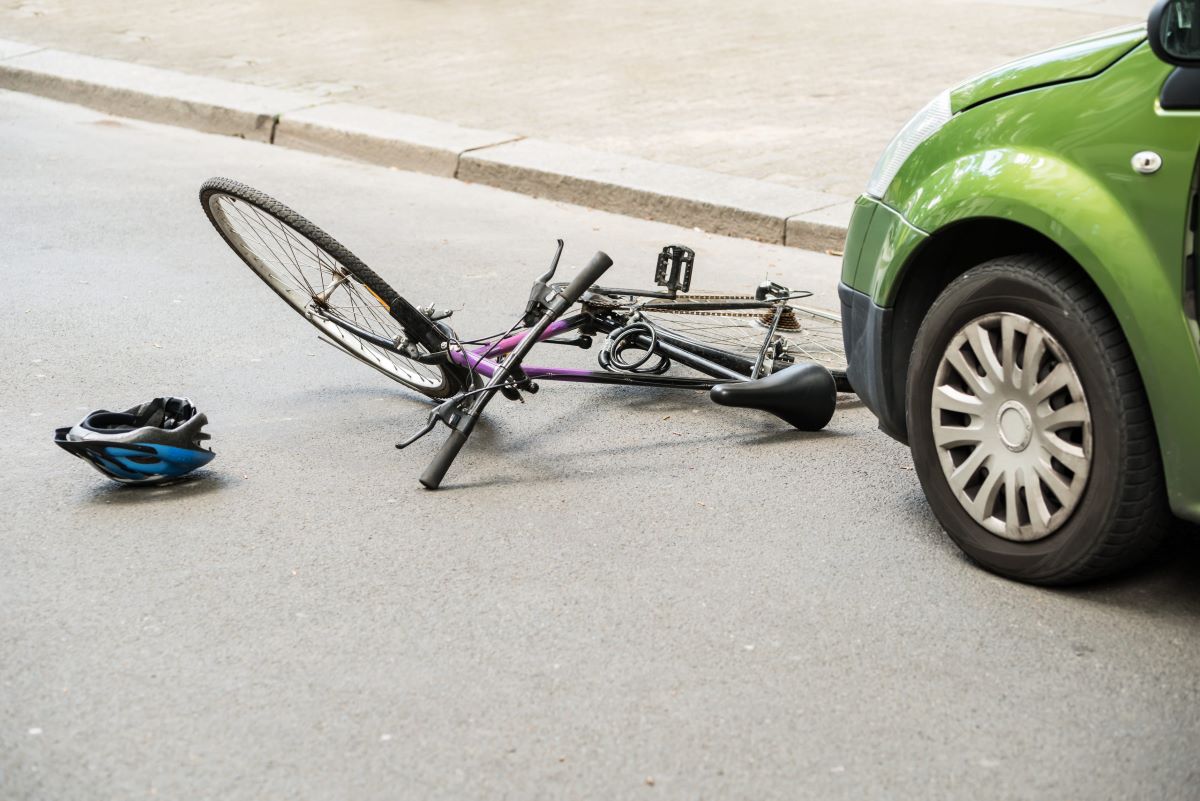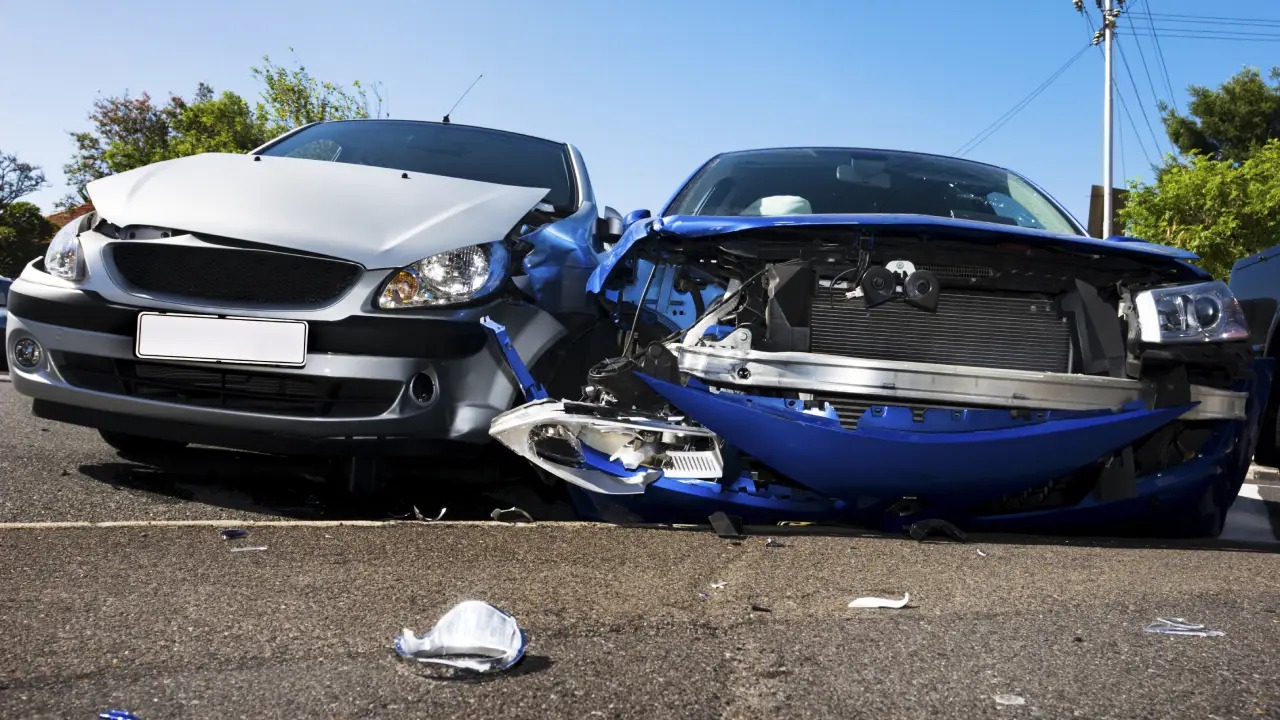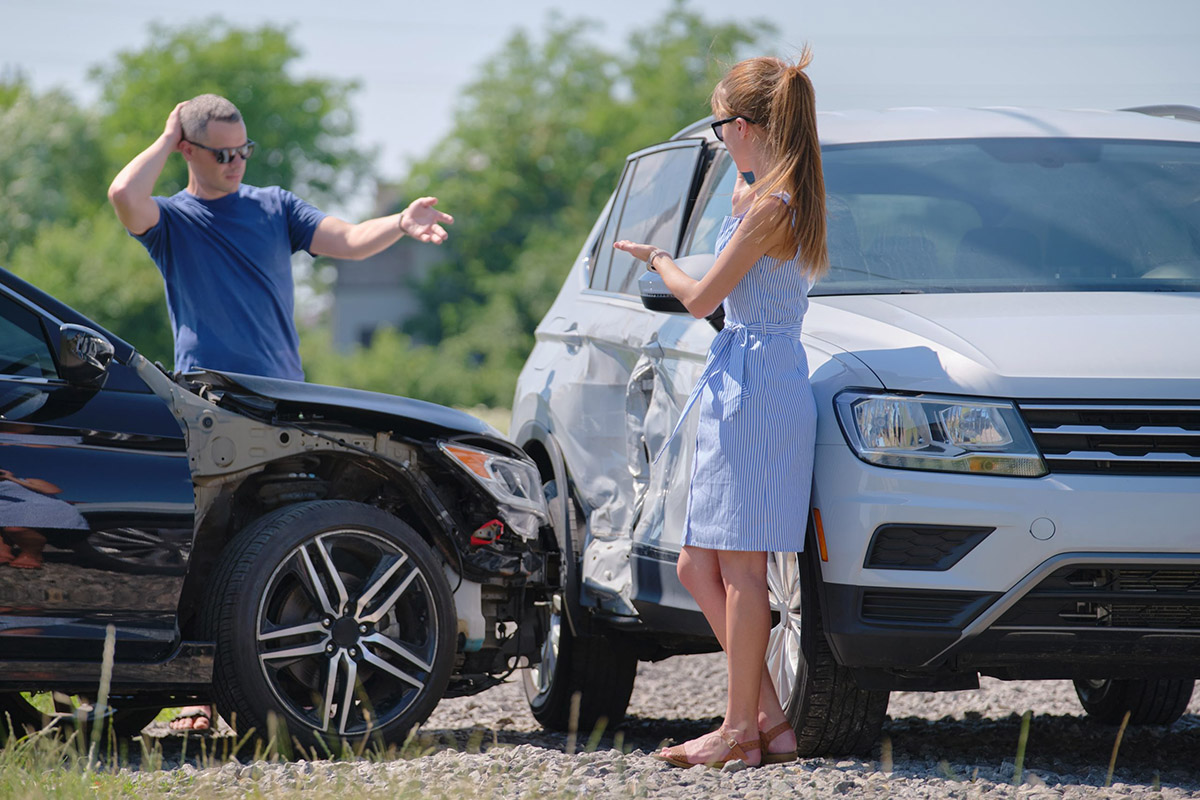

Finance
What Insurance Covers Bicycle Accidents?
Published: November 13, 2023
Discover what insurance policies provide coverage for bicycle accidents and how you can secure your finances in case of unexpected mishaps on the road.
(Many of the links in this article redirect to a specific reviewed product. Your purchase of these products through affiliate links helps to generate commission for LiveWell, at no extra cost. Learn more)
Table of Contents
Introduction
When it comes to bicycle accidents, it’s crucial to have adequate insurance coverage to protect yourself and your possessions. Bicycle accidents can result in significant medical expenses, damage to your bike, and even liability if you cause an accident involving other individuals or property.
In this article, we will explore the various insurance options available to cover bicycle accidents. From liability insurance to uninsured/underinsured motorist coverage, we will provide a comprehensive overview of the different policies that can safeguard you in the event of an incident.
It’s important to note that insurance coverage for bicycle accidents can vary depending on your location and the specific insurance company you choose. It’s always recommended to review your policy carefully and consult with an insurance professional to ensure you have the right coverage for your needs.
Without further ado, let’s dive into the different insurance options available to cover bicycle accidents and how they can provide you with peace of mind on your cycling adventures.
Liability Insurance Coverage
Liability insurance coverage is a crucial component of any bicycle insurance policy. This coverage protects you if you are found legally responsible for causing injuries or damage to another person or their property in a bicycle accident.
If you accidentally collide with a pedestrian, damage someone’s car, or cause any other type of property damage while cycling, liability insurance can help cover the costs associated with the incident. This can include medical expenses, property repairs, and legal fees.
Liability insurance coverage typically includes two types: bodily injury liability and property damage liability. Bodily injury liability covers the medical expenses, lost wages, and pain and suffering of the injured party. Property damage liability, on the other hand, covers the cost to repair or replace damaged property.
It’s important to note that liability insurance coverage is not limited to accidents involving other individuals. It can also include coverage for accidents caused by your actions, such as collisions with stationary objects, like lampposts or fences.
When choosing liability insurance coverage for bicycle accidents, it’s essential to select policy limits that adequately protect your assets. Higher coverage limits provide more financial protection but usually come with higher premiums. Assess your financial situation and potential risks to determine the appropriate coverage amount for your needs.
Furthermore, liability insurance coverage may also extend to legal representation if the injured party decides to file a lawsuit against you. Having this protection can be critical in defending your rights and ensuring your interests are represented.
It’s worth noting that liability coverage may be available as part of your existing auto or homeowner’s insurance policy. However, not all policies include specific coverage for bicycle accidents, so it’s important to review your policy carefully or consult with your insurance provider to understand the extent of your coverage.
Now that we’ve covered liability insurance coverage, let’s explore the next insurance option: uninsured/underinsured motorist coverage.
Uninsured/Underinsured Motorist Coverage
Uninsured/underinsured motorist (UM/UIM) coverage is another crucial insurance option to consider when protecting yourself in the event of a bicycle accident. This coverage comes into play when you’re involved in an accident with a motorist who is either uninsured or doesn’t have sufficient insurance to cover your damages.
Unfortunately, not all drivers on the road carry adequate insurance coverage. In the event of a bicycle accident, if the at-fault driver does not have insurance or their coverage is insufficient, you may be left with significant medical expenses, bike repair costs, and other losses that you’ll need to cover out of pocket.
With UM/UIM coverage, your insurance company steps in to cover the expenses that the uninsured or underinsured driver would otherwise be responsible for. This can include medical expenses, rehabilitation costs, and even lost wages due to the accident.
Underinsured motorist coverage comes into play when the at-fault driver’s insurance coverage is not enough to fully compensate for your losses. In this situation, your UM/UIM coverage will help cover the difference up to the limits of your policy.
Having UM/UIM coverage is particularly crucial for cyclists, as they are more vulnerable to serious injuries in accidents involving motor vehicles. It provides an added layer of protection and peace of mind when navigating busy roads or encountering drivers who may not have proper insurance coverage.
Note that UM/UIM coverage is typically optional, and the coverage limits can vary depending on your policy. It’s essential to review your policy and consult with your insurance provider to understand the specific terms and conditions of your UM/UIM coverage.
Next, we will explore another form of coverage that can help alleviate the financial burden of medical expenses: medical payments coverage.
Medical Payments Coverage
Medical payments coverage, also known as med-pay, is a type of insurance coverage that can help cover the medical expenses resulting from a bicycle accident, regardless of who is at fault. This coverage is designed to reimburse you for your medical bills related to the accident, including hospital stays, surgeries, medications, and other necessary treatments.
Medical payments coverage can be particularly beneficial for cyclists, as they are more exposed to the risk of injuries compared to occupants of motor vehicles. In the event of a bicycle accident, this coverage can provide quick access to funds to cover immediate medical expenses without having to rely solely on your health insurance coverage.
One of the significant advantages of medical payments coverage is that it usually has no deductible or low deductibles, allowing you to access the funds more easily. This can be crucial, especially if you have high-deductible health insurance or are faced with a substantial amount of out-of-pocket costs from your health insurance policy.
It’s important to note that medical payments coverage is typically limited to covering medical expenses related to the accident. It does not provide coverage for lost wages, pain and suffering, or other non-medical damages. However, it can still play a vital role in covering your immediate medical needs and preventing medical bills from piling up.
When considering medical payments coverage, it’s essential to assess your existing health insurance coverage. If you have comprehensive health insurance with low deductibles and sufficient coverage for accidents, you may not need additional medical payments coverage. However, if your health insurance coverage is limited or you have high out-of-pocket expenses, having this additional coverage can provide a safety net and help ease the financial burden of medical costs resulting from a bicycle accident.
As with any insurance coverage, it’s important to review the specific terms and limits of your medical payments coverage. Each policy may have different coverage limits and exclusions, so it’s crucial to fully understand the scope of your coverage.
Next, we will explore another insurance option that may provide coverage for bicycle accidents: personal injury protection (PIP).
Personal Injury Protection (PIP)
Personal Injury Protection (PIP) is a type of insurance coverage that provides benefits for medical expenses, lost wages, and other related costs resulting from a bicycle accident, regardless of who is at fault. PIP coverage is typically associated with auto insurance policies but may also extend to cover bicycle accidents in some cases.
PIP coverage can be particularly valuable if you live in a no-fault insurance state or if your auto insurance policy includes PIP coverage that extends to bicycle accidents. This coverage can help ensure that you receive prompt medical treatment and compensation for your injuries, regardless of whether the accident involved another vehicle.
Under PIP coverage, you can typically receive reimbursement for medical expenses, including ambulance fees, hospital visits, surgeries, and ongoing treatments such as physical therapy. PIP may also cover a portion of your lost wages if your injuries prevent you from working during your recovery period.
One of the advantages of PIP coverage is its no-fault nature, meaning that you can receive benefits regardless of who caused the accident. This can expedite the claims process and provide you with essential support during your recovery.
However, it’s important to note that the availability and extent of PIP coverage for bicycle accidents may vary depending on your insurance policy and the regulations in your state. Not all auto insurance policies extend PIP benefits to bicycle accidents, so it’s crucial to review your policy or consult with your insurance provider to understand the specific terms of your coverage.
If your auto insurance policy does not provide PIP coverage for bicycle accidents, it’s still crucial to explore other insurance options, such as medical payments coverage or health insurance, to ensure you have the necessary protection in the event of a bicycle accident.
As we’ve explored various insurance options to cover bicycle accidents, it’s important to note that the specific coverage types and availability may differ depending on your location and insurance provider. It’s always recommended to carefully review your policy and consult with an insurance professional to ensure you have the appropriate coverage for your needs.
Continue reading to learn about other potential sources of coverage for bicycle accidents, such as homeowners/renters insurance, bicycle insurance, and health insurance.
Homeowners/Renters Insurance Coverage
While homeowners or renters insurance is primarily designed to cover property damage and liability within your home or rental property, it often extends coverage beyond the physical location. In some cases, homeowners or renters insurance may provide coverage for bicycle accidents as well.
Homeowners or renters insurance typically includes personal liability coverage, which can protect you if you are held responsible for causing bodily injury or property damage to others, including accidents involving bicycles. This coverage can help cover legal expenses, medical expenses, and property repairs or replacements in the event of an accident.
If your homeowners or renters insurance policy includes liability coverage, it’s important to review the specific terms to understand if it extends to bicycle accidents. Some policies may explicitly include bicycles in their coverage, while others may have limitations or exclusions related to vehicles.
Additionally, homeowners or renters insurance may also provide coverage for theft or damage to your bicycle. However, this coverage is typically subject to certain limits and deductibles, so it’s important to review the policy to understand the extent of coverage for your bike.
It’s worth noting that homeowners or renters insurance coverage for bicycle accidents may not be sufficient on its own, especially if you frequently ride your bicycle outside of your property. In such cases, it’s important to consider additional insurance options specifically tailored to cover bicycle accidents.
Continue reading to discover more about dedicated bicycle insurance coverage and its benefits for cyclists.
Bicycle Insurance Coverage
For avid cyclists or those who rely heavily on their bicycles, dedicated bicycle insurance coverage can provide comprehensive protection specifically tailored to the unique risks associated with cycling.
Bicycle insurance coverage can typically offer benefits such as:
- Accidental damage coverage: This includes coverage for repairs or replacement of your bicycle in the event of accidental damage, whether it’s from a collision, theft, or vandalism.
- Personal liability coverage: Similar to liability coverage in other insurance policies, this coverage protects you if you cause bodily injury or property damage to others while cycling.
- Medical expenses coverage: This covers the medical expenses incurred as a result of a bicycle accident, including hospital bills, surgeries, and rehabilitation costs.
- Accessories coverage: Bicycle insurance often extends coverage to accessories, such as helmets, lights, and bike locks, protecting them from theft or damage.
- Race event coverage: If you participate in organized races or events, certain bicycle insurance policies may provide coverage for accidents or damage that occur during these activities.
One of the significant advantages of bicycle insurance coverage is that it may provide worldwide coverage, allowing you to ride and travel with peace of mind, knowing that you are protected wherever you go.
When considering bicycle insurance, it’s essential to review the specific terms and limits of the policy. Some policies may have restrictions on the types of bicycles covered or require certain security measures, such as using specific locks or storing the bicycle indoors when not in use.
Bicycle insurance can be a valuable addition to your other insurance coverage, providing specialized protection for your prized possession and safeguarding you from the financial burdens of accidents or theft. Before purchasing a policy, compare different insurance providers, review their coverages, and consider your specific needs and budget.
However, it’s important to note that bicycle insurance coverage may overlap with or duplicate coverage provided by other insurance policies, such as homeowners, renters, or auto insurance. Therefore, it’s crucial to review your existing coverage and determine if additional bicycle insurance is necessary.
Now let’s explore another potential source of coverage for bicycle accidents: health insurance.
Health Insurance Coverage
While health insurance primarily provides coverage for medical expenses related to illness or injury, it can also play a role in providing coverage for bicycle accidents.
If you sustain injuries in a bicycle accident, your health insurance can help cover the costs of medical treatment, hospital stays, surgeries, and other necessary healthcare services. It can provide financial protection and peace of mind, ensuring that you receive the prompt medical attention you need without incurring significant out-of-pocket expenses.
It’s important to review the specifics of your health insurance policy to understand the extent of coverage for bicycle accidents. Some policies may have limitations or exclusions related to certain activities, including cycling. You may need to reach out to your health insurance provider or consult the policy documents to ensure that bicycle accidents are covered.
Additionally, health insurance coverage can be particularly valuable if you sustain injuries that require ongoing medical care or rehabilitation. It can cover the expenses associated with physical therapy, chiropractic treatments, or other forms of rehabilitation to aid in your recovery.
It’s worth noting that health insurance coverage is typically focused on medical expenses and may not extend to cover property damage, liability, or other non-medical aspects associated with bicycle accidents. For comprehensive protection, it may be necessary to explore additional insurance options such as liability coverage, uninsured/underinsured motorist coverage, or bicycle insurance coverage.
Before relying solely on your health insurance for coverage, it’s essential to review your policy carefully and assess the potential limitations or gaps in coverage. Consider your cycling habits, the risks associated with your environment, and any additional coverage you may need to ensure you have comprehensive protection.
Now that we have explored various insurance options for bicycle accidents, including liability insurance, uninsured/underinsured motorist coverage, medical payments coverage, homeowners/renters insurance, bicycle insurance, and health insurance, it’s important to note that the specific coverage options available to you may vary depending on your location, insurance providers, and individual policy terms.
Remember to review your policies, consult with insurance professionals, and consider your unique needs and circumstances to determine the appropriate coverage for your bicycle adventures.
Auto Insurance Coverage
Auto insurance may seem unrelated to bicycle accidents, but it can still provide coverage in certain situations. If you own a car and have an auto insurance policy, it’s important to understand how it may come into play in bicycle accidents.
One way auto insurance coverage can be relevant is if you are involved in a bicycle accident while driving your vehicle. Your auto insurance policy may provide liability coverage to protect you against claims made by other parties involved in the accident. This can include coverage for their medical expenses, property damage, and other losses resulting from the accident.
However, it’s important to note that your auto insurance coverage may not automatically extend to cover bicycle accidents if you’re not driving a vehicle at the time. Therefore, it’s crucial to review your policy or consult with your insurance provider to understand the extent of coverage for bicycle accidents.
In some cases, your auto insurance policy may offer additional coverage options that can be relevant to cycling. For example, you may have the option to include uninsured/underinsured motorist coverage, which can provide financial protection if you’re involved in a bicycle accident with an uninsured or underinsured driver. This coverage can help cover your medical expenses and other losses if the at-fault driver does not have sufficient insurance to compensate you adequately.
As with any insurance coverage, it’s important to review the specific terms, limits, and exclusions of your auto insurance policy. Each policy may vary, and it’s crucial to ensure you have the appropriate coverage for your needs.
Keep in mind that even if your auto insurance policy does not directly provide coverage for bicycle accidents, you can still explore other insurance options, such as liability insurance, medical payments coverage, or dedicated bicycle insurance, to obtain the necessary protection.
Now that we have explored various insurance options, including auto insurance coverage, let’s conclude our discussion on insurance coverage for bicycle accidents.
Conclusion
As a cyclist, it’s important to protect yourself and your assets by having adequate insurance coverage for bicycle accidents. While the specific insurance options available to you may vary depending on your location and insurance providers, there are several key coverages to consider.
Liability insurance coverage is essential as it protects you if you are found legally responsible for causing injuries or property damage in a bicycle accident. Uninsured/underinsured motorist coverage provides a safety net if you are involved in an accident with a driver who lacks sufficient insurance coverage.
Medical payments coverage can help alleviate the financial burden of medical expenses resulting from a bicycle accident, while personal injury protection (PIP) may provide benefits for medical expenses and lost wages.
Your homeowners or renters insurance policy may offer liability coverage for bicycle accidents, and dedicated bicycle insurance can provide comprehensive protection specifically tailored to the unique risks associated with cycling.
While health insurance primarily covers medical expenses, it’s important to review the extent of coverage it provides for bicycle accidents. Auto insurance coverage may also be relevant in certain situations, particularly if you are injured in a bicycle accident while driving your vehicle.
Each insurance coverage has its specific terms, limits, and exclusions, so it’s crucial to review your policies carefully and consult with insurance professionals to ensure you have the appropriate coverage for your needs.
By having the right insurance coverage, you can enjoy peace of mind knowing that you are protected financially in the event of a bicycle accident. Prioritize your safety and the security of your assets by exploring the insurance options available to you and selecting the policies that best meet your needs.
Remember, accidents can happen at any time, but with proper insurance coverage, you can focus on enjoying your cycling adventures while having the necessary protection in place.
Safe travels!














